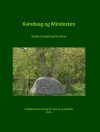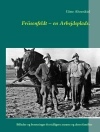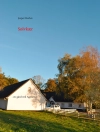This book discusses the potential of a systemic and multidisciplinary design approach to improve urban quality, health, livability, and inclusiveness for people living in informal settlements. In most instances, attempts to address informal settlements lack an adequate assessment of their impact on the wider built environment and implementation of the UN’s Sustainable Development Goals. The Integrated Modification Methodology (IMM), introduced here, offers a systematic, multidisciplinary design tool encompassing several of the aspects that define the environmental performance of urban systems. The book also demonstrates the application of the methodology to an informal settlement, proving its potential to guide systemicurban transformations, also in urban areas lacking formal planning. The case study investigated is in the Rocinha favela in Rio de Janeiro, which ischaracterized by poor water quality, lack of drainage and sanitation systems, and very few green spaces. Based on a rigorous methodology, the process described here can also be applied in similar contexts around the world.
Зміст
1. The Rocinha favela and past slum upgrading programmes in Rio de Janeiro / Brazil; shortcomings of past experiences and limitations of fragmented transformation actions.- 2. The Integrated Modification Methodology (how it works + past examples of its application to formal contexts + comparison with other methodologies/tools used for similar purposes).- 3. Analysis of the existing situation (IMM Diagnostic phase).- 4. Urban metabolism and identification of intervention areas (IMM Assumption phase).- 5. Projects: energy.- 6. Projects: ecosystem.- services.- 7. Projects: waste.- 8. Projects: wastewater treatment.- 9. Projects: food.- 10. Projects: mobility.- 11. Analysis of system-wide improvements (IMM Retrofit phase).- 12. Conclusions.
Про автора
Gabriele Masera, M.Eng., Ph.D., is Full Professor at the ABC Department (Architecture, Built Environment and Construction Engineering), Politecnico di Milano, Milan, Italy, in the field of innovative construction technologies for sustainability and nearly zero-energy buildings.Dr. Masera has taught at the Politecnico di Milano since 2002 and has supervised more than 150 Master’s theses and Ph D dissertations there. Besides teaching, he researches widely on these topics, taking part also in some national strategic projects and three European projects: about the use of Phase Change Materials in buildings, about the definition of sustainable building innovations in 2030 and about energy retrofitting of residential buildings. He has been a Visiting Professor at the Universidad Politécnica de Madrid and Keio University in Tokyo. He has been a member of the scientific committees for several international conferences and has published widely on international journals. He currently serves as Deputy Dean of the School of Architecture Urban Planning Construction Engineering of Politecnico di Milano.
Massimo Tadi, B.Sc. Arch., M.Sc. Arch., is an Associate Professor at the ABC Department (Architecture, Built Environment, and Construction Engineering) and Director of the IMM Design Lab at the Politecnico di Milano, Milan, Italy. His main areas of expertise aresustainable architecture and urban design, with a specific focus on techniques and strategies for the transformation of complex urban contexts to promote energy efficiency, and on environmentally oriented urban development. His research and design work emphasizes the relationships between urban morphology and energy consumption, and between contemporary mobility infrastructure, urban development, and architecture. He has been a Lecturer and invited speaker at many universities around the world and a Visiting Professor at the Universidade Federal do Rio de Janeiro, Brazil. He has won many prizes and design awards, and many of his projects have been published in international architectural magazines. He currently serves as a peer-reviewer for several publications.












